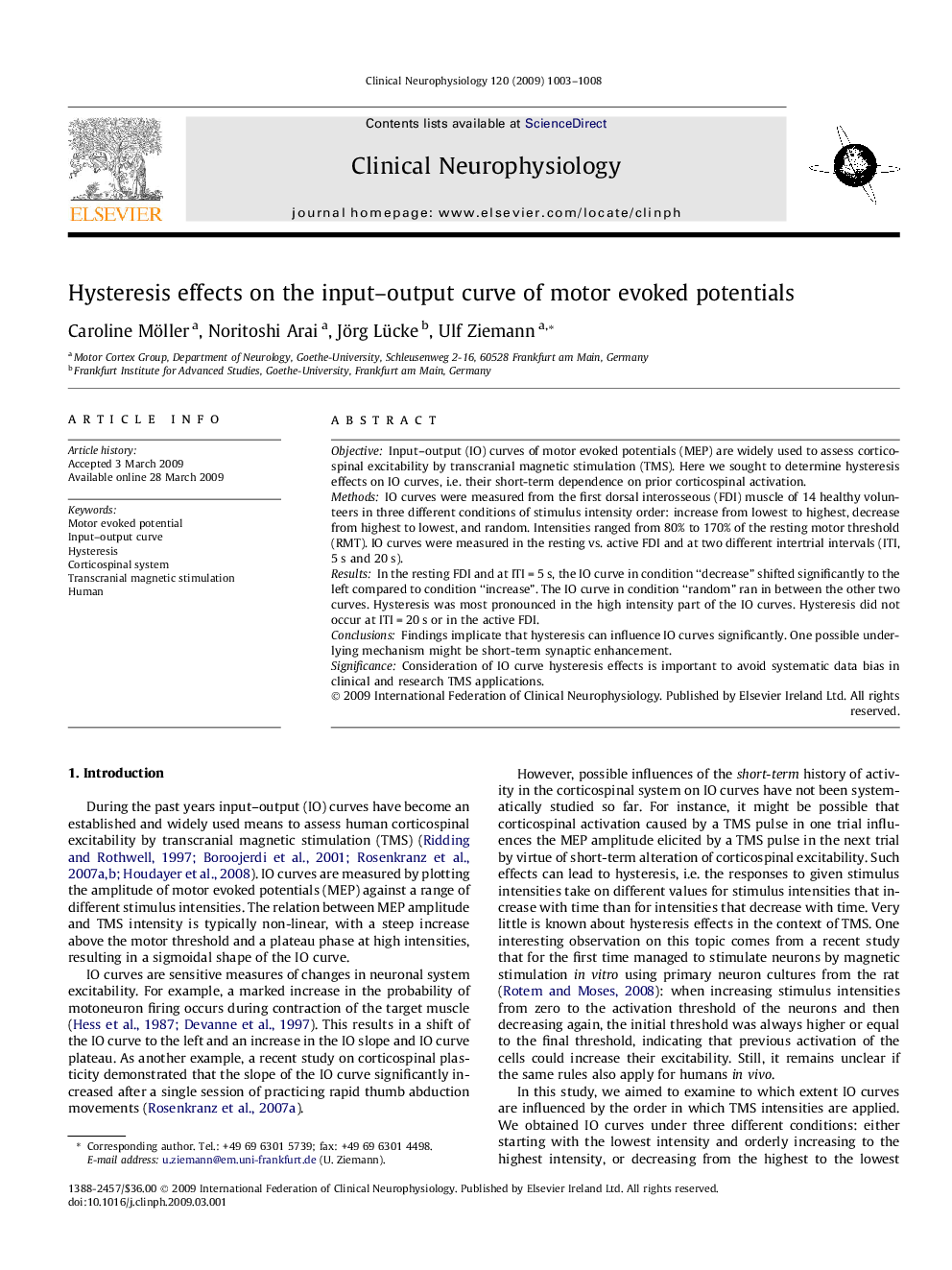| Article ID | Journal | Published Year | Pages | File Type |
|---|---|---|---|---|
| 3046060 | Clinical Neurophysiology | 2009 | 6 Pages |
ObjectiveInput–output (IO) curves of motor evoked potentials (MEP) are widely used to assess corticospinal excitability by transcranial magnetic stimulation (TMS). Here we sought to determine hysteresis effects on IO curves, i.e. their short-term dependence on prior corticospinal activation.MethodsIO curves were measured from the first dorsal interosseous (FDI) muscle of 14 healthy volunteers in three different conditions of stimulus intensity order: increase from lowest to highest, decrease from highest to lowest, and random. Intensities ranged from 80% to 170% of the resting motor threshold (RMT). IO curves were measured in the resting vs. active FDI and at two different intertrial intervals (ITI, 5 s and 20 s).ResultsIn the resting FDI and at ITI = 5 s, the IO curve in condition “decrease” shifted significantly to the left compared to condition “increase”. The IO curve in condition “random” ran in between the other two curves. Hysteresis was most pronounced in the high intensity part of the IO curves. Hysteresis did not occur at ITI = 20 s or in the active FDI.ConclusionsFindings implicate that hysteresis can influence IO curves significantly. One possible underlying mechanism might be short-term synaptic enhancement.SignificanceConsideration of IO curve hysteresis effects is important to avoid systematic data bias in clinical and research TMS applications.
